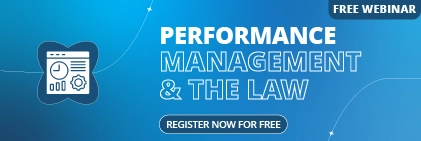Many organisations have an aversion to workplace compliance training because they think compliance is very complicated. Compliance is essential training that no organisation can miss out on, and it can vary depending on the size of your organisation and the sector in which you operate. There are some fundamental compliance requirements, such as work health and safety, privacy, bullying, harassment and discrimination, as well as those that are specific to sectors such as health, community services, financial services, and education. With the right technology and a mix of online and face-to-face training, compliance can be managed deliberately and in a cost-effective manner.
1. Leadership and Culture
Leaders should be aware of an organisation’s goals and culture, as well as have the knowledge of relevant laws to mitigate risks, maintain a positive brand reputation, and avoid vicarious liability. Without informed leaders, the company is rendered vulnerable to high employee turnover, decreased productivity, increased cases of workplace mishaps and brand degradation.
Furthermore, having a well-informed team of leaders and decision-makers is very important in creating a culture of compliance. It is easy to make a complaint about a workplace wherein the culture in itself follows the ethics of compliance. The leaders are the most important people when it comes to creating a culture of compliance.
2. Effective yet easy training
Being able to track and report completions is essential when it comes to workplace compliance training because, in a worst-case scenario, you will need to be able to demonstrate that people have completed mandatory training that is part of your workplace relations and safety program. Therefore the training needs to be easy to access, relatable and allow people to get the job done and move onto their day-to-day responsibilities without too much pain. For example, the Sentrient suite of online compliance courses has returned 87% completion by the due date, which is three times the number of traditional compliance regimes. This has been achieved via short, sharp and to-the-point training delivered in a way that is simple for people to access and easy for them to relate to. From CEOs to suppliers, everyone should be able to understand your compliance policies and procedures, and they must be easy to access and acknowledge. This, together with legally endorsed or industry-approved compliance training, is key.
Moreover, opt for an easy-to-use compliance management tool since compliance rules change often, and you don’t want to waste unnecessary time dealing with a difficult-to-navigate LMS or in spending hours training employees how to use the system.
3. Cover maximum ground
Compliance goes beyond common sense. As an employer, you should make sure that you make the maximum effort to ensure 100% compliance in your organisation. From the hiring process to the relieving process, no stone should be left unturned when it comes to compliance, make sure that you cover maximum ground when it comes to compliance training.
Here are all the aspects you can’t afford to not cover during your compliance training:
- Workplace bullying
- Workplace sexual harassment
- Equal Employment Opportunity
- Safe use of the internet and social media
- Employee Privacy
- Workplace health and safety
- General employee health and wellbeing
4. Make it easily accessible
Compliance is very much a part of the employees’ daily routine. Therefore, compliance training should be delivered regularly to all employees, contractors and volunteers and accompanied by your organisation’s policies.
It is not feasible to take busy employees away from their working environment to do workplace compliance training in long, drawn-out, face-to-face sessions. By making compliance content available online, you will be able to provide training as and when required. Rolling out new policies and keeping old policies stored in one accessible place can allow your staff to be up-to-date regardless of their location. There will be some face-to-face training that is best-delivered face-to-face, so a blended approach often delivers the best ROI.
5. Supplement with technology
Technology can supplement the manual efforts of your HR team and enable full compliance from the time somebody starts with you and through their life as an employee. For instance, it is advisable to have a centralised workplace compliance system that runs well across devices, 24×7.
A cloud-based workplace compliance tool can help store policies, certificates and badges all in one place, as mentioned in point 4, i.e. making things easily accessible.
Through automation, timely reminders can be sent to employees via email regarding workplace compliance course completion deadlines, new workplace compliance updates, etc. A simple yet efficient dashboard can help you, your HR managers, and compliance officers keep track of your employees’ progress in compliance training.
Get a free demo of our end-to-end cloud-based workplace compliance system.





